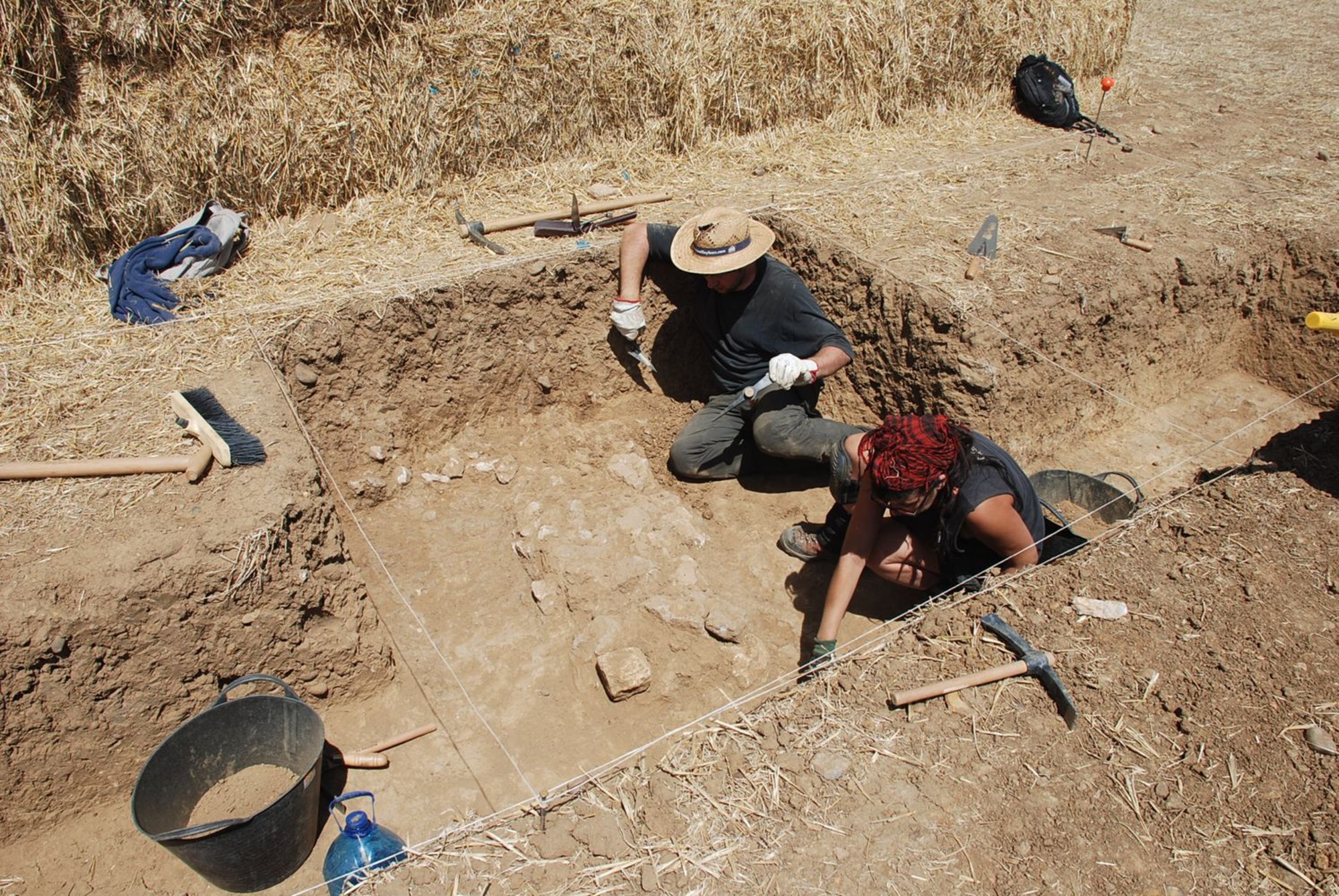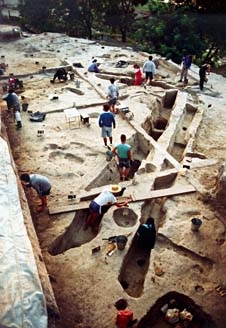- Home
- Franco-Romanian Collaboration
- The collaboration
Within the framework of bilateral exchanges, since 1991, between the Ministry of Culture/Francophonie, (Directorate of Cultural Inheritance and Sub directorate of Archaeology) and the Romanian Ministry of Culture, an archaeological program of French-Romanian collaboration was set up for the Hârsova tell in 1993. This was established after several preparations were made with the archaeologists of the The Romanian National History Museum (MNIR), and the The National Museum of History and Archaeology at Constanta (MINAC).
The research completed before 1992 revealed the richness and the complexity of the site. Based on this, the French-Romanian collaboration project created the goal of developing a "school" at the Hârsova dig, for the treatment of methodologies in the acquisition and optimizing of stratigraphic and ethnographic data.
For a site as complex in stratigraphy as the Hârsova tell, with its building artifacts primarily made of earth and clay, the historical and ethnographic analysis is significantly improved by the application of methods similar to those employed in the analysis of multi-stratified sites, and more particularly in urban archaeological studies.
The second aspect of the collaboration program relates to multidisciplinary studies. Actions taken since 1993 aim to, through a direct application of formation concerning the Hârsova tell, contribute to the development of a new laboratory for the The Romanian National History Museum (MNIR) ; what was originally the Department of Interdisciplinary Research has recently been transformed into the National Interdisciplinary Research Center. In addition to an ongoing exchange between French and Romanian research scientists, this excavation is a privileged place of formation for the Romanian students in archaeology and has been named the flagship Romanian archaeological dig.
Partial view of the Hârsova tell Archaeological site.

